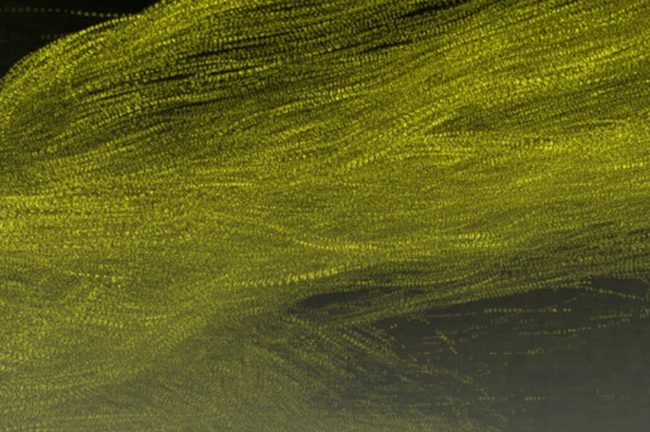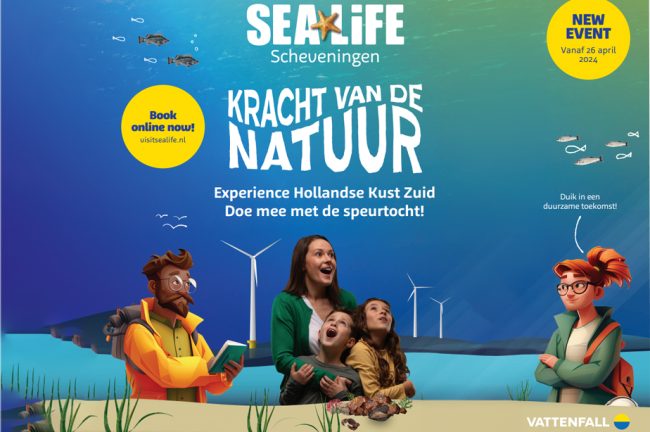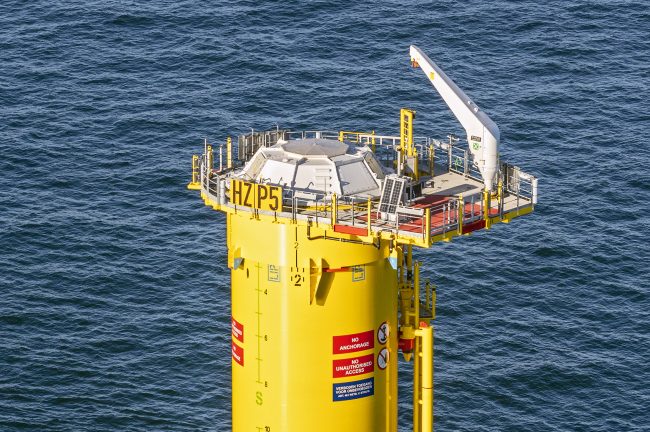Last month, Vattenfall installed special wind turbine blades to three wind turbines of wind farm Hollandse Kust Zuid. These blades are specifically designed to be easily recycled at the end of their lifespan. Vattenfall is committed to a circular economy and reducing environmental impact throughout the product’s life cycle. Senior Environmental & Sustainability Specialist at Vattenfall Gustav Frid tells us more on how these blades fit into that commitment, why they are easier to recycle and how they can impact the current wind turbine landscape.
To date, wind turbines can be partially recycled. However, composite material, which is mainly found in wind turbine blades, makes it difficult to fully recycle the turbines. Gustav Frid: “Recycling conventional wind turbine blades is possible, but currently few recycling processes have been industrialised. There are different approaches to recycling, such asann mechanical and chemical recycling. Chemical recycling requires a lot of energy to dissolve the resin and the strength of the remaining glass fibre is reduced in the process.” However, as more and more wind turbines reach end of life and need to be decommissioned, Frid sees a rapid change within the business to also deal with composite waste from blades in a more circular way.
One example are the Siemens Gamesa recyclable blades. These blades have a special resin that dissolves at lower temperatures. This not only saves energy in the recycling process, but also makes it easier to separate the glass fibres, allowing the fibres to retain higher strength. The higher the quality of the remaining fibres, the more value they have – as they are closer to their original composition. The reason you apply glass fibres in a product is to increase the strength of the product. When you have glass fibres with high tensile strength and higher durability it gives you the opportunity to apply them in more products than if more strength is lost. Next to that, the dissolved resin can also be recycled again.
Frid: “As Vattenfall, our approach to circularity is to look at the waste hierarchy. Firstly, we continuously extend the lifetime of our assets. When this is no longer possible, we seek alternatives to scrapping. This can be in the form of selling turbine components as spare parts or to find other repurposing solutions that would even further prolong the lifetime of the composite material. If this is not possible, recycling will come in to play. When it comes to recycling, we are constantly looking for circular solutions that provide opportunities for easier recycling at the end of a product’s lifetime.”
No compromise on quality
The trials of the recyclable blades show that they meet the same range of quality as the conventional Siemens Gamesa blades. The blades also look the same as the rest of the blades installed at the Hollandse Kust Zuid wind farm. These similarities can be difficult when decommissioning the wind farm at end-of-life. Frid: “That is why we are focusing on having more data shared on the recyclable blades. Not only in documentation, but also physically branding them as a recyclable blade. When we then decommission the wind farm, or if something is damaged during the lifetime, we need to know that this blade is produced with the new resin to proceed in the right manner.”
Even though the function and durability of the blades are similar to conventional wind turbine blades, the production process is different. This meant that only three HKZ turbines could be fitted with these new blades. Frid: “We would have liked to have more recyclable blades installed, but there is a supply constraint for this new type of blade.”
100 percent material recycling
“In 2021, Vattenfall committed to not place any wind turbines blades in landfill”, Frid says. “For wind turbine blades decommissioned from 2025 on we want to have at least a 50 percent material recycling rate. By 2030 we aim for hundred percent material recycling. But even now, we are already using solutions that are beyond 50 percent.” Some of these circular technologies have been around for a long time. But it is only now that a larger amount of wind farms reach end-of-life and need to be dealt with. “This circular market is now becoming more interesting for investors. They see that the quantities will only increase in the near, and long-term future. There must be solutions for the remaining materials available. Because not only for us, but also for other wind farm operators, landfilling is not an option.”
Frid also discloses that even though the innovation of recyclable blades is promising, there is currently not one solution to solve the challenges with composite waste. “As Vattenfall we think it is important to look into different options and ways on how to recycle the composite material. It is necessary to ensure suitable and available recycling solutions meeting the needs for the diversity of existing wind turbine blades and different locations of decommissioning. Therefore, we engage in several projects. Those with the most promising technologies that can produce recycled products attractive for the market will succeed in the end. But until then, it is quite a differentiated landscape with a mixture of recycling actors using different technologies.”
Consistent in and output
Frid explains further that the market for circular blade needs to mature further. Currently, there are not a lot of actors present on the market. To have the current factories up and running with a solid business case you are dependent on a consistent intake of materials to also have a consistent output of products and a customer who pays for them. “Wind farms do not provide a consistent flow of materials”, Frid explains. “At least not if you look at just one actor. There is a need for hubs to collect materials in order to supply a systematic flow to different recyclers. As Vattenfall, we want to bring partners together to make this development happen.”
For now, Frid looks positively at the three installed sets of blades. “There are several very promising ways on recycling, but to design for disassembly is a very important component in circular economy. This makes it easier to separate the components and from a circularity point of view we can only applaud that. As Vattenfall, we would like to see this happen more often in the production of wind turbine components. We are interested in following this development together with Siemens Gamesa and to also look further into the application, product development and upscaling this certain way of recycling in the future.”
Photo: Vattenfall/Charles Walker




